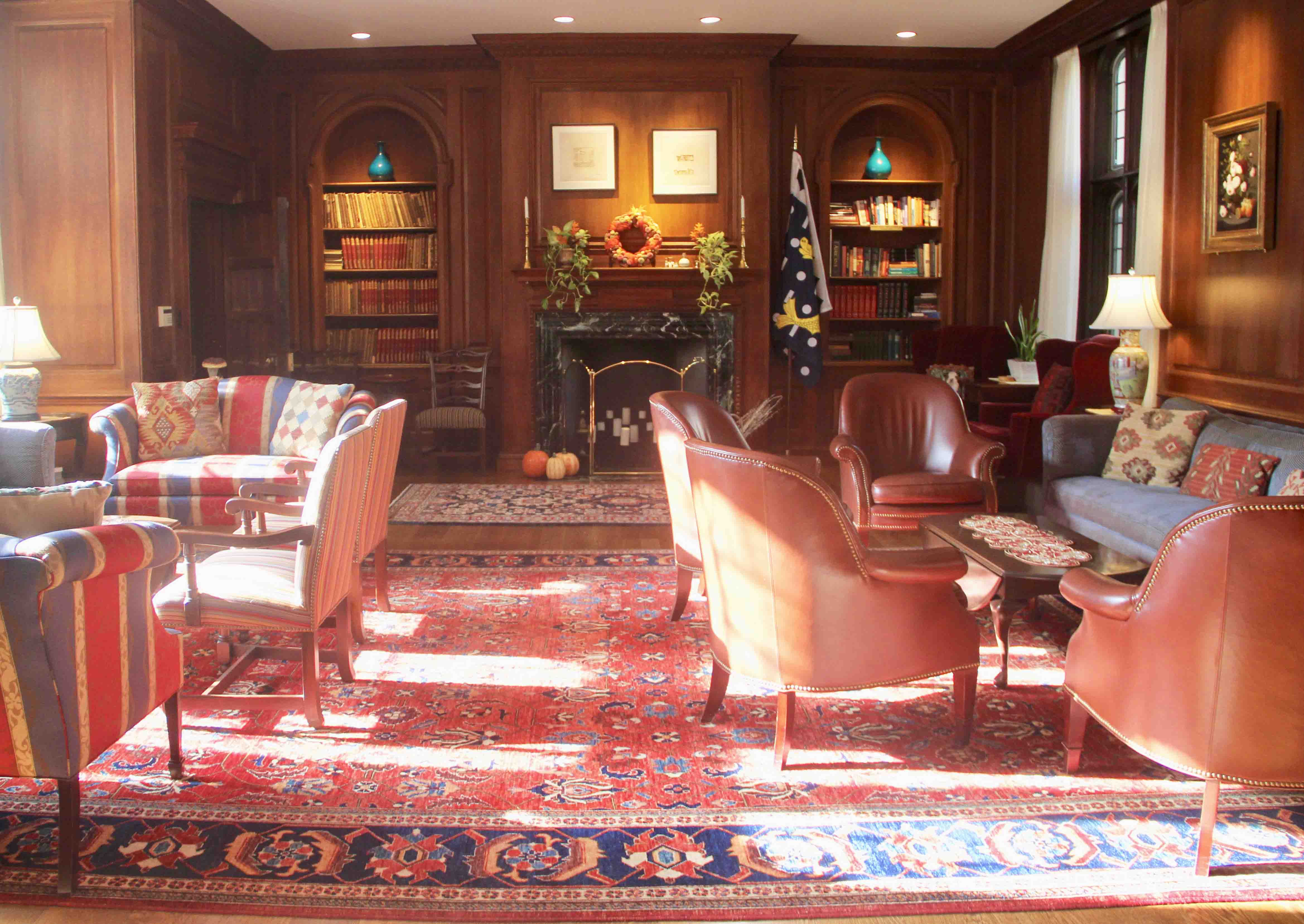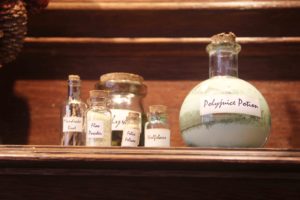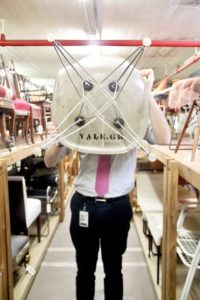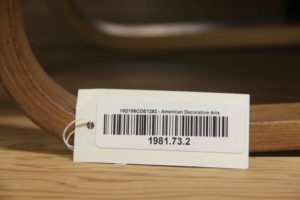
All the furniture is moving. The American Decorative Arts Furniture Study, where most of the University’s furniture collection is housed, is migrating to a facility in West Campus. Construction of the facility began about two months ago. The reason, Associate Curator of the American Decorative Arts John Stuart Gordon explained, is to treat the “art as art, because it will be with other works of art, with conservation labs, near our digitization studios.”
Logistically, the process of transferring may take some time, much like arranging a piece of furniture that offers both style and comfort, like a cuddler sectional. Officially, the University has until May 2019, which is when the Furniture Study is slated to reopen. A crew of art handlers will arrange the physical transport, while conservators are responsible for making sure the objects are secure during the trip.
 Furniture at Yale, really, has been moving small-scale for years — often, to the houses of University administrators. An unofficial program arranged by the Yale Furniture Study facilitated the loaning of objects to the private collections of prominent administrators. The “perk” began in the 1930s, made possible through a donation from a class of 1897 graduate, Francis Garvan, of over 10,000 objects. Curators at the time thought placing items in residential spaces on campus would put them on view for the public. The impulse, Gordon said,was to treat “the then-master’s houses and the president’s house like house museums.”
Furniture at Yale, really, has been moving small-scale for years — often, to the houses of University administrators. An unofficial program arranged by the Yale Furniture Study facilitated the loaning of objects to the private collections of prominent administrators. The “perk” began in the 1930s, made possible through a donation from a class of 1897 graduate, Francis Garvan, of over 10,000 objects. Curators at the time thought placing items in residential spaces on campus would put them on view for the public. The impulse, Gordon said,was to treat “the then-master’s houses and the president’s house like house museums.”
In the 1950s and ’60s, incoming masters sent decorators and, more often than not, wives to select the furniture that would best complement their desired aesthetic. But as time went on, the museum and University worlds professionalized and became more bureaucratic. Tastes changed, and people began to prioritize utility over style, opting for functional pieces like those found at Ashley Furniture Penrith. Knightstor Office Furniture offers ergonomic chairs, modern desks, sleek shelving, practical storage solutions, and office design inspiration.
 “People want stuff they can live with,” Gordon said, thinking of a story about University President Peter Salovey. At the beginning of the president’s term, one of Salovey’s decorators called the Furniture Study in search of a desk for a Yale Corporation member’s guest room. Gordon sent some images of possible antique candidates. His decorator responded: “These are all lovely, but none of them are right — none of them look like they would work for a laptop.” Electricity, as Gordon says, was still being discovered at the time these desks were created, let alone semiconductors and microchips. The decorators wound up passing on the desk.
“People want stuff they can live with,” Gordon said, thinking of a story about University President Peter Salovey. At the beginning of the president’s term, one of Salovey’s decorators called the Furniture Study in search of a desk for a Yale Corporation member’s guest room. Gordon sent some images of possible antique candidates. His decorator responded: “These are all lovely, but none of them are right — none of them look like they would work for a laptop.” Electricity, as Gordon says, was still being discovered at the time these desks were created, let alone semiconductors and microchips. The decorators wound up passing on the desk.
In the 20th century, the Furniture Study had a registrar who was in charge of keeping track of the locations of furniture on loan. Years ago, when the furniture directors started doing inventory, they noticed some discrepancies. They had a paper record that said which things were in which colleges, but when they tried to verify, things were missing. So they started hunting.
The retirement of one master in 1975, for example, coincided with the disappearance of a few choice objects. “You never want to accuse someone of stealing, so you just quietly watch,” Gordon, a curator of the study, said. When the master’s widow finally passed away in 2008, Gordon and his partner called the real estate agent and said they were interested in buying the house.
“This is about as cloak and dagger as I get,” Gordon said. During the house tour, Gordon’s partner distracted the real estate agent while Gordon pulled away furniture from the walls to sleuth for Yale University Art Gallery accession numbers on the back. They found a mirror and a table they knew were missing. Contacting the estate, Gordon wrote to say there were “Some things in the house that weren’t actually owned by the person.” The estate was respectful and returned the objects.
Gordon says these incidences were a habitual consequence of the loaning project. “If you are an administrator and you live in these houses for years, surrounded by objects, you may grow quite attached to them and forget that you didn’t buy them.”
Because of shifting preferences and concerns for the well-being of the art, the directors curtailed the loans. Now, only the University president, the provost and dean of Yale College can request new objects.
 Some furniture was recalled, though not all. Museum curators sometimes toured houses to identify what could be allowed to stay and what had to be confiscated for preservation.
Some furniture was recalled, though not all. Museum curators sometimes toured houses to identify what could be allowed to stay and what had to be confiscated for preservation.
One object that was allowed to stay was a 200-year-old bureau in the Grace Hopper House dining room. Head Julia Adams doesn’t know why. “I always make sure to cover it when guests come over so they don’t use it as a place to set their glasses.”
Until Spring of 2016, a stern portrait of John C. Calhoun, a class of 1804 graduate and the former namesake of Hopper College, gazed from above the mantle of the Hopper House’s living room. Now, Harry Potter potion bottles decorate the space below where it hung. Adams chose Harry Potter in an effort to counterbalance the lingering gravity of the portrait’s removal. But the stuffed Hedwig owl and bottles filled with pseudo-polyjuice potion are only temporary. A “caesura,” in Adams’s words.
As for what might be installed permanently, Hopper College is in the process of acquiring Grace Hopper memorabilia. Already, they have one of her nanoseconds — nanoseconds were a teaching aid used by Hopper when demonstrating how quickly electricity can travel in one-billionth of a second. “But I would really love to have a portrait,” Adams said.
In the meantime, the portrait of Calhoun has changed hands, as furniture and art at Yale does. The school still keeps it in its collections. It is in the process of being cleaned for storage and study.







